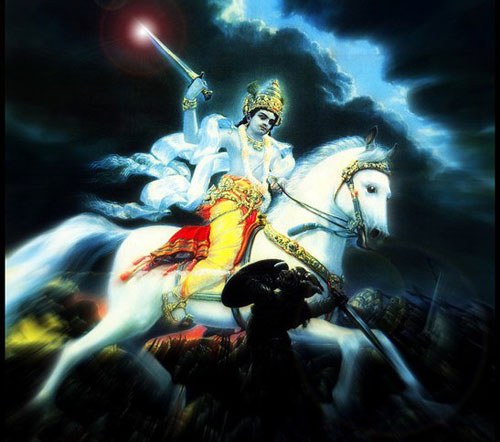Islamic extremism in Central Asia and the Caucasus will further increase in the next few years, predicts a new report by Anna Münster, a Fellow of the Russia and Eurasia Programme at Chatham House.
US withdrawal from Afghanistan in 2014, and expected regime changes in Kazakhstan and Uzbekistan threaten to destabilise the region, providing radicals with a platform from which to operate, claims Growing Islamic Extremism in Central Asia and the Caucasus – Situation and Outlook.
The situation is further complicated, writes Munster, by the 'New Great Game' unfolding in Central Asia – part two of the 'Great Game' of the 19th and early 20th centuries, during which time Britain and Russia vied for power within the region.
The report, written for the World Watch List, traces the roots of Islam within Central Asia and the Caucasus to Dagestan (a republic of Russia, in the North Caucasus) in the seventh century, although the religion has since taken a variety of different shapes in different countries.
Sunni Islam is most widely followed, but Munster claims it is the individual and collective responses to particular factions of Islam which dictate how the religion is manifested.
Hard-line groups such as Hizb ut-Tahrir and the Muslim Brotherhood, and a "cult of martyrdom", have become a "unifying and mobilising factor" for young Muslims often dissatisfied by their political and socio-economic situation, reports Munster.
The notion of Islam growing as a response to disillusionment is referenced several times, as is the existence of solidarity between Muslims in Central Asia and the Caucasus who feel victimised by the West and believe themselves to be subjected to a "grand conspiracy against the Muslim world".
This sense of solidarity is perpetuated, writes Munster, through warfare – whether wars in Afghanistan and Iraq or conflicts in Chechnya and Bosnia: "The advance of political Islam in the last quarter of the century in the region is often described as a response to local grievances, challenges and conflicts," she writes.
Munster predicts US withdrawal of troops from Afghanistan will have a destabilising effect on the whole region, while she says the collapse of the Soviet Union played a major role in the recent growth of Islam, and Islamic extremism.
The repression of Muslims by the Soviet Union, which "closed mosques and exiled or killed clergy", and the emergence of new independent states such as Armenia, Georgia and Azerbaijan, led to "local Islamic expressions developing under foreign influences", she writes.
These influences ranged from the peaceful to the political, as a range of international organisations gained footholds within the region. Different countries reacted differently, claims Munster, depending upon, among other things, their interpretation of Islam and the extent to which they were secularised during the Soviet era.
As various global powers vie for access to the wealth of natural resources in Central Asia and the Caucasus, Munster reports several modern examples of corruption and bribery.
Perhaps most notably, she highlights a deliberate "closing of the eyes" to human rights abuses in Uzbekistan, where Western governments have vested interests. Here, Munster says Islamists have been subjected to brutality and torture in prisons – "even those who never engaged in violent actions and were [incarcerated] simply for possessing a Hizb ut-Tahrir leaflet".
Torture is often "systematic" and "deeply disturbing", she writes, while the "extension of government control over life, including religious life, has been reminiscent of Soviet times, though the use of new technologies and events of the Arab Spring may present a stark warning to today's repressive governments".

 Religious fundamentalists are on the rise and that is bad for our societies. Most people will agree on this. Yet few examine who religious fundamentalists are. Obviously, such persons would want to stick to the fundamentals of their religion. They want to live a life that is advocated in their holy books and would please their God. Now, since religious fundamentalists pose a problem, does it mean that the fundamentals of religions are bad for our societies? Let’s look at the three biggest religions:
Religious fundamentalists are on the rise and that is bad for our societies. Most people will agree on this. Yet few examine who religious fundamentalists are. Obviously, such persons would want to stick to the fundamentals of their religion. They want to live a life that is advocated in their holy books and would please their God. Now, since religious fundamentalists pose a problem, does it mean that the fundamentals of religions are bad for our societies? Let’s look at the three biggest religions: Concerning Hinduism, fundamentalists believe that Brahman (other names are allowed and in use) is the one true God. However, Brahman is not a personal God who saves those who believe in Him and damns all others. Rather, Brahman is the most subtle conscious essence that permeates everything and everyone, never mind, which religion he follows or whether he is an atheist. “Atman is Brahman” or “one’s own Self is God”, the Vedas proclaim.
Concerning Hinduism, fundamentalists believe that Brahman (other names are allowed and in use) is the one true God. However, Brahman is not a personal God who saves those who believe in Him and damns all others. Rather, Brahman is the most subtle conscious essence that permeates everything and everyone, never mind, which religion he follows or whether he is an atheist. “Atman is Brahman” or “one’s own Self is God”, the Vedas proclaim.